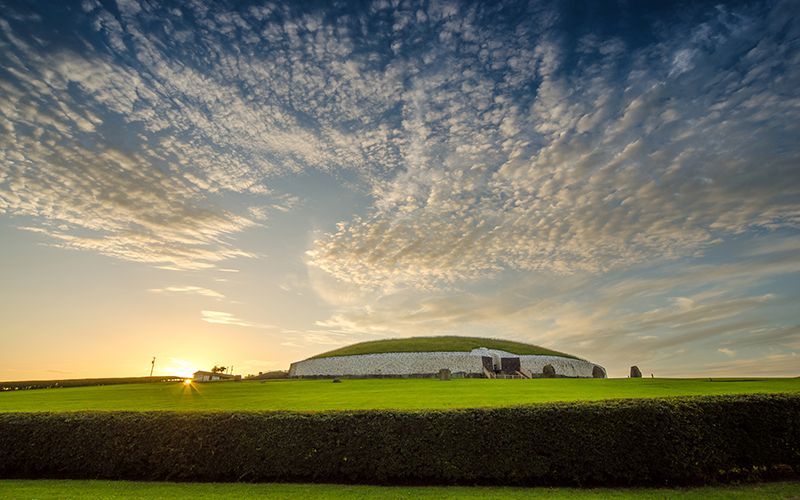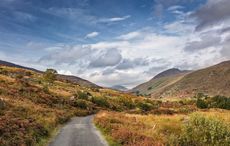Trembling in summer breezes, bog cotton brightens the Irish landscape.
These fluffy, feathery blooms are found where their name suggests, smack bang in the middle of Ireland’s beautiful bogs.
Ireland’s bogs and peatlands may not hold precious memories for those who were forced as kids to cut and stack turf, but trust me Ireland’s bogs are unimaginably spectacular.
The bog enhanced the colors of the Irish landscape
At first glance, visitors may not appreciate the fact that the palette of the Irish landscape is made richer by our bogs.
These peatlands add a wide range of pigments to Irish hillsides from deep, rich purples with brownish hues, to forty shades of brilliant green.
Words fail to describe the brilliance of nature’s Irish greens, from soft sages to the brightest of pea greens.
But bog cotton adds another dimension to this picture, texturing the landscape, just like Donegal tweed, woven with love.
Bog cotton grows in boggy meadows, with white gossamer cotton heads swaying in summer breezes, or drooping under the weight of soft day mists.
Usually appreciated at a distance, a densely blooming meadow can resemble a snowy field, right in the middle of the warmest months.

Bog cotton at Silvermines Ridge, Trail, Co Tipperary. (Ireland's Content Pool)
Bog cotton – a first cousin of real cotton?
Bog Cotton truly does resemble cotton.
Despite the fact that it lacks the tensile strength of true cotton, our ancestors used this Irish silk to fabricate candle wicks, and many an Irish man and woman rested their heads on a pillow stuffed with bog cotton.
In the 19th century, bog cotton was even mixed with wool to make cloth, carpets, and roofing felt.
Bog cotton or cotton grass?
Botanists may prefer to call it cotton grass, not bog cotton, but to me, this beautiful Irish wildflower will always be bog cotton.
Now, I’m not going to share a litany of scientific knowledge and botanical facts about this sedge plant, which is native to the Emerald Isle.
What mesmerizes me is the symbolism of this simple plant with single stalks balancing cotton-like flowers, which remind me of a hare’s tail, or an old man’s hair blowing in the wind.
Up close, the beauty of bog cotton can be truly appreciated.

Bog cotton at Lullymore heritage and discovery park, Co Kildare. (Ireland's Content Pool)
Séamus Heaney’s bog poems
One Irish man who acknowledged the terrible beauty and symbolism of the Irish bog was poet Séamus Heaney (1939 – 2013). In 1995, he won the Nobel Prize for literature for his poems “of lyrical beauty and ethical depth” (Nobel Foundation, 1995).
Heaney described the bog as a “symbol of the Irish psyche.”
His bog poems describe the flow of bog history, from hoarder of precious antiquities and jeweled chalices, to burial grounds of ancient bog men and, in more recent times, victims of Northern Ireland’s terrible struggles.
The depth and symbolism of Heaney’s bog poetry are far beyond the scope of this simple blog post, but let me simply remind you how the vegetation of the bog inspired the poet’s imagination.
These words from his 1975 poem “Kinship” remind me of the life-giving forces of the bog, and make me think of dormant bog cotton seeds, waiting for the first hint of spring to start the cycle of life again …
“Ruminant around,
digestion of mollusc
and seed-pod,
deep pollen bin.”
"Bog Cotton" by Michael Longley
Another Northern Irish poet, Michael Longley, wrote a poem entitled “Bog Cotton.” Here’s an excerpt …
“It hangs on by a thread, denser than thistledown,
Reluctant to fly, a weather vane that traces
The flow of cloud shadow over monotonous bog –
And useless too, though it might well bring to mind
The plumpness of pillows, the staunching of wounds…”
I am no literary scholar, but I like to think Longley is using bog cotton as a symbol of reconciliation when he describes it as a “stauncher of wounds.”
Bog cotton – a symbol of Ireland?
And so, in conclusion, I am going to dare say bog cotton is not merely an iconic plant of the Irish landscape, but it is a plant that is uniquely symbolic of Ireland.
Slán agus beannacht, (Goodbye and blessings)
*Mairead Geary came to America for one year 20 years ago. She now lives with her husband and children in Kentucky and is proud to be an American citizen. Read more on her blog here.
** This article was originally published in 2017, updated in September 2025.



Comments